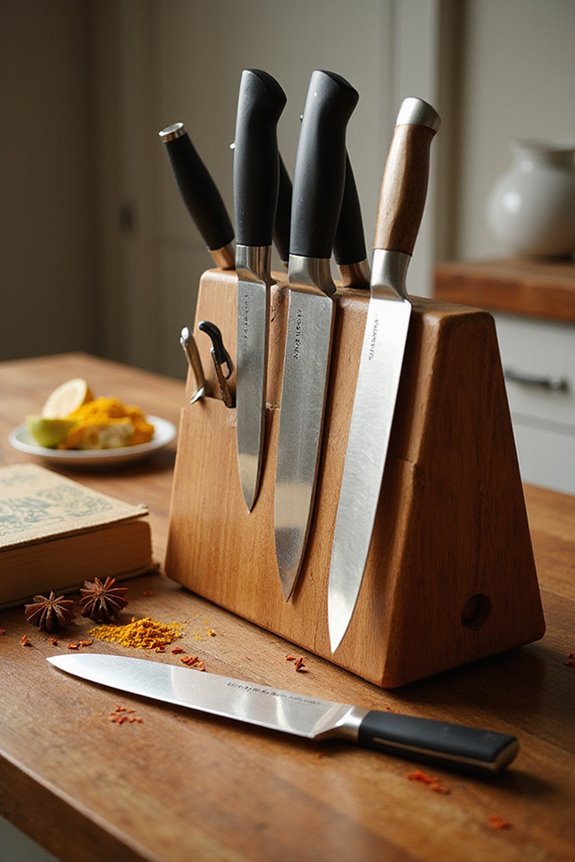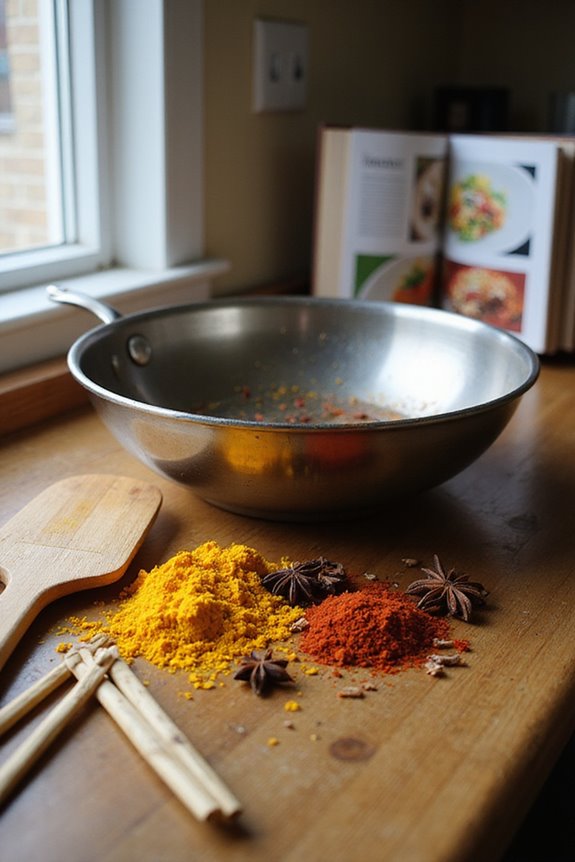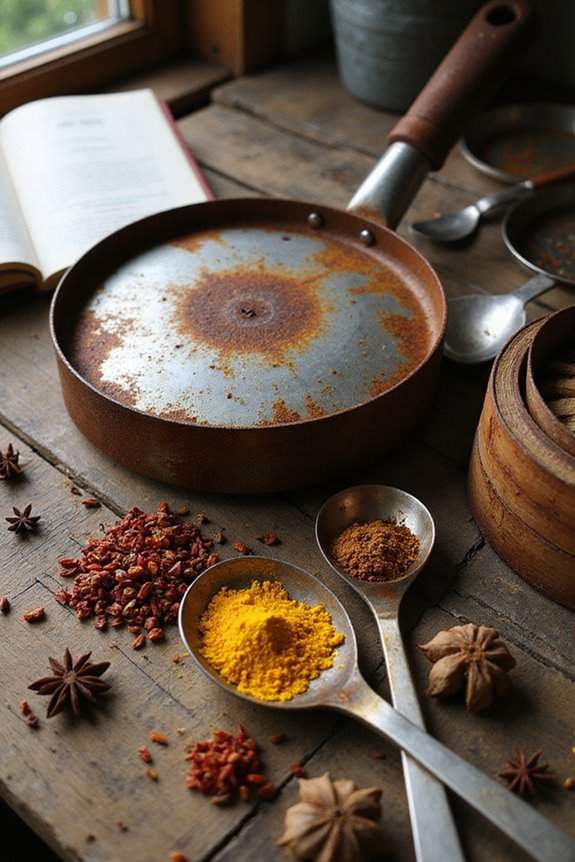Storing our kitchen knives can be both fun and functional! We can use knife blocks or magnetic strips to keep our blades safe and accessible. Drawer inserts help prevent clashing and dulling, while a cozy spot for our collection keeps things organized. Remember, cleaning them after use and honing them weekly is key to keeping them magical! With just a bit of care and creativity, we’ll guarantee our knives are always ready for delightful culinary adventures! Want to know more ways to organize?
Key Takeaways
- Use drawer inserts or knife blocks to prevent clashing and dulling of blades.
- Consider magnetic strips for space-saving vertical storage and displaying your knife collection.
- Store knives out of children’s reach, using safety latches or high compartments for safety.
- Clean knives immediately after use and dry them to prevent rust and maintain hygiene.
- Hone knives regularly and sharpen them a few times a year to keep them effective and safe.
Proper Knife Storage Methods
When it comes to storing our beloved kitchen knives, we have a few delightful options that can keep our blades safe and ready for action! ✨ Let’s explore some proper storage methods that not only protect our knives but also add a little charm to our cooking space.
- Drawer Inserts: These nifty inserts prevent our knives from clashing and dulling. Plus, safety latches can keep little hands away, making it a worry-free zone!
- Magnetic Strips: With these, we can show off our knives while saving precious counter space. Just make sure they’re securely mounted! Additionally, storing knives properly can contribute to their maintenance and longevity, ensuring they remain sharp and effective for all our cooking adventures.
Ultimately, whether tucked in a drawer or proudly displayed, our knives deserve a cozy home. Happy cooking, everyone!
Cleanliness and Maintenance Considerations

To keep our favorite kitchen knives in tip-top shape, it’s essential to prioritize cleanliness and maintenance—the real magic behind their longevity! ✨ After all, nobody wants a dull knife or one that’s a tad bit scary to use. Here are some delightful hygiene practices to follow:
- Wash Hands First: Always clean your hands before handling knives.
- Clean Immediately: Rinse knives after use with mild soap and warm water—no soaking!
- Handle Care: Wipe wooden or organic handles gently with a damp cloth. Peeking for cracks helps too!
- Dry Right Away: A quick dry with a clean towel prevents rust. Additionally, storing your knives in a way that minimizes contact helps maintain blade integrity for longer-lasting sharpness.
Safety Aspects in Knife Storage

Keeping our kitchen knives clean doesn’t just make them last longer—it helps us cook safely! 🎉 Proper storage is just as essential, ensuring that we avoid accidents while keeping our beloved blades sharp and ready. Here are some delightful safety tips to keep our kitchen safe:
- Dedicated Storage: Use knife blocks or magnetic strips to avoid loose blades, which can lead to injury.
- Point Away: Always keep blades pointed away from our hands while removing them.
- Out of Reach: We should store knives high or in locked compartments to keep little hands safe.
- Skip the Edge: Avoid placing knives near countertops or sinks where they might fall.
- Material Quality: Utilizing knife storage methods that prioritize durability and safety is essential to maintain blade integrity and ensure long-lasting performance.
With these simple steps, we can enjoy injury prevention and knife safety in our cooking adventures!
Maintaining Knife Sharpness
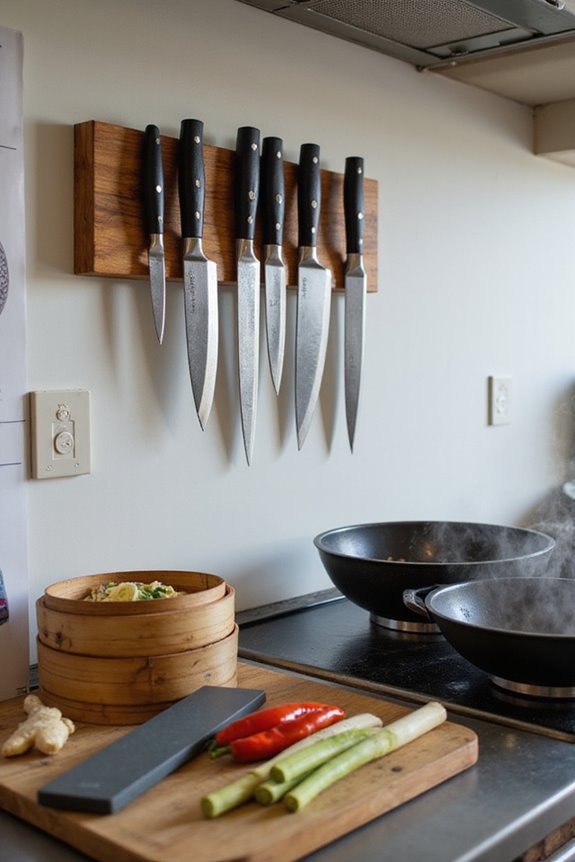
Maintaining knife sharpness can feel like a magical art, especially when we see how our trusty blades perform in the kitchen! ✨ A sharp knife not only makes cooking safer but also more enjoyable, transforming meal prep into a delightful adventure. To keep our knives at their best, let’s use some effective honing techniques. We should hone our knives once or twice a week using a honing rod, like giving them a freshening up before holiday gatherings!
Also, remember sharpening frequency is key. We should sharpen knives a few times a year—much less often than honing—using whetstones for that perfect edge. For longevity and performance, it’s essential to be mindful of regular maintenance of our knives. If we follow these steps, our knives will be as lively as Grandma’s fruitcake at a festive feast!
Convenience and Accessibility in Storage
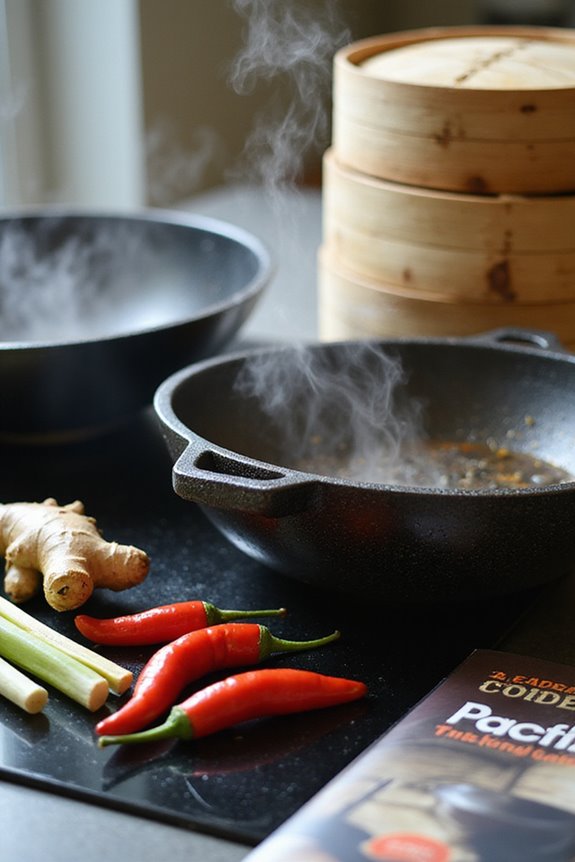
Isn’t it delightful when our favorite kitchen tools are within arm’s reach? Having the right knife stored conveniently can be magical while we whip up our meals. Let’s consider a few options:
- Knife block designs: Bamboo blocks are lightweight and organized, making it easy to spot our go-to knives.
- Customizable storage: Rearranging slots helps us grab what we need quickly, which is perfect for those busy dinner rushes!
- Magnetic storage: Wall-mounted strips keep our blades visible and accessible, while bringing a touch of style to our kitchen. Additionally, proper knife storage helps maintain the sharpness and condition of your blades for better performance in the kitchen.
Storage Specifics for Specialty Knives
When it comes to storing our specialty knives, we really want to treat them like the stars they are in our kitchens. For Japanese knives, let’s provide moisture-free spaces to prevent rust. Boning knife storage should have individual slots; nobody likes a bent blade! To keep our paring knives organized, we can use snug spaces or magnetic strips for quick grabs. Bread knife protection means opting for vertical storage or blade guards to save those serrated edges. For utility knife management and filleting knife care, individual slots work wonders, preventing any unwanted shifting. Additionally, using a knife block made from heat-resistant materials can ensure safety and protection while keeping your knives organized. With the right setup, your specialty knives will shine like the holiday lights in a cozy kitchen!
Tips for Organizing Your Knife Collection
Organizing our knife collection can be a delightful adventure, much like preparing a festive holiday feast! To make things easier and more enjoyable, we can group our knives by type. For instance, let’s keep our chef’s knives near the cutting board and our paring knives in a drawer organizer.
Here are some fun tips to enhance our kitchen layout:
- Choose a Knife Block: It saves space and keeps knives sharp!
- Magnetic Racks: Showcase our favorite blades and save counter space.
- DIY Solutions: Use jars with dried beans or rice for a creative touch.
With these organized approaches, we’ll guarantee our knives stay safe and ready for culinary magic. Happy slicing!
Frequently Asked Questions
Can I Store My Knives in the Refrigerator for Safety?
We shouldn’t store our knives in the refrigerator for safety. The moisture can cause rust, and kitchen accidents can happen. Let’s choose proper storage solutions to keep our knives safe and lasting longer together.
What Is the Best Way to Transport Knives Securely?
Transporting knives securely isn’t just about safety—it’s about belonging. We embrace quality knife cases and travel bags, ensuring our tools stay protected while reflecting our commitment to responsible cooking. Let’s keep our knives safe together!
How Often Should I Sharpen My Knives?
When it comes to knife sharpening frequency, we recommend sharpening every 1 to 2 months for home use. Utilizing proper sharpening techniques regularly keeps our knives in top shape and enhances our cooking experience together.
Are There Specific Materials That Should Avoid Contact With Knives?
We should definitely avoid hard surfaces like glass or granite when using knives. Instead, let’s stick to wooden blocks or magnetic strips for safe storage, keeping our blades sharp and ready for all our culinary adventures together.
How Can I Prevent Rust on My Knives During Storage?
Picture us as knights guarding our trusty blades. For effective rust prevention, let’s prioritize knife care: clean and dry them well, store in ventilated areas, and consider magnetic strips for a moisture-free environment together.

